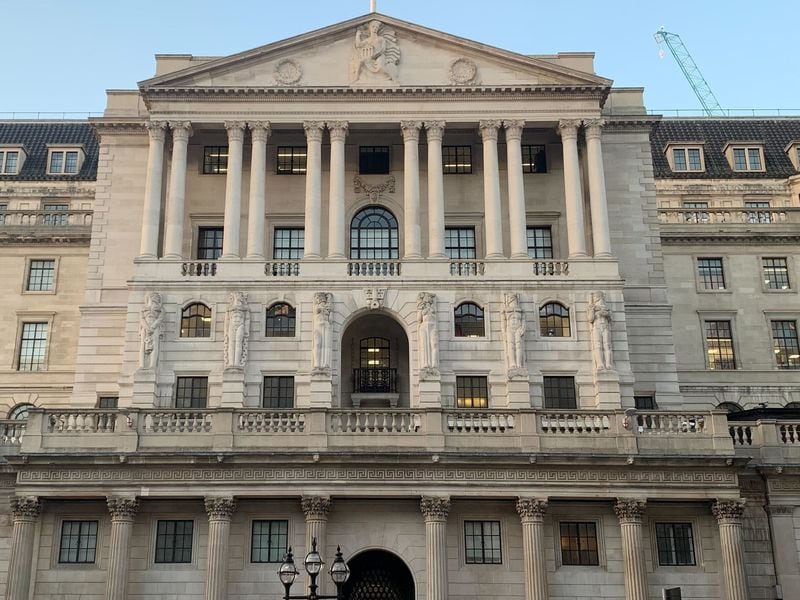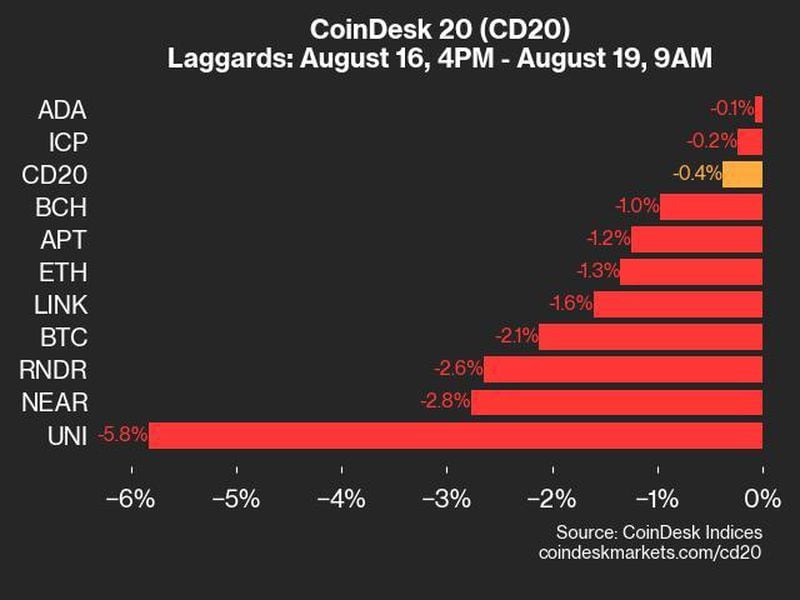Justin Sun: The Next Do Kwon or Sam Bankman-Fried?
Justin Sun is a lot like Sam Bankmain-Fried and Do Kwon. All three have outsized ambitions, SEC case files and have gambled with bitcoin. And all three have sat at the top of crypto trading empires that would cause cascading problems across the industry if they were to implode. Thankfully, that’s only happened to two.
awbvious is a pseudonymous DeFi user and internet artist.
After a lifetime in crypto Justin Sun has done nearly everything the industry has to offer – he saw the early years of Ripple Labs, launched a blockchain in 2017 and got rich enough to throw his weight around as an advisor and investor ever since – so you might justifiably compare him to any crypto entrepreneur and find similarities.
However, when it comes to Justin Sun, Do Kwon and Sam Bankman-Fried there is a je ne sais quoi that links all three. Knowing the calamity his peers have caused, it’s worth considering these similarities in personality, affect and business — and what it means for Sun’s future.
Justin Sun seems to have taken a page from the SBF playbook with his similar TradFi-style shenanigans, similar political ambitions and similar “savior washing.” He also knows something of the ways of Do Kwon, considering their similar problematic projects and attempts to obfuscate those project’s origins.
If you had to guess which of the triumvirate said “We have a way to pump the price” and “Fake the KYC!” could you? (It was Sun, reportedly.)
None of that is truly alarming until you realize the scope of Sun’s influence in crypto is on a scale matched only by few, including SBF and Do Kwon. We know what happened after those two were toppled: cascading waves of bankruptcies, liquidations and misery. Would the downfall of Justin Sun cause as much damage? It’s worth considering.
Justin Sun’s Tron blockchain now matches the total value locked (TVL) in Do Kwon’s Terra blockchain right before it collapsed.
:format(jpg)/cloudfront-us-east-1.images.arcpublishing.com/coindesk/WLWMFINEUFCXRKGZ5HMH6W4IYM.png)
The above shows DefiLlama data from May 2022. Do Kwon’s Terra (labeled here as “Terra Classic”) is number two in TVL, representing almost 15% of all TVL on all chains related to decentralized finance (DeFi). The screengrab shows a period just two weeks before the infamous UST stablecoin “death spiral.”
:format(jpg)/cloudfront-us-east-1.images.arcpublishing.com/coindesk/3UVGV3KMZFCYZGIS4YLO5F6Z34.png)
This chart above shows the cumulative TVL for all DeFi-related chains. To the right of the vertical line is the aftermath of Do Kwon’s Terra collapsing, wiping out half of all DeFi with it.
:format(jpg)/cloudfront-us-east-1.images.arcpublishing.com/coindesk/5GY2JUSZYJFMFOTDZZ2HSDD6YU.png)
At the time of writing this article, Justin Sun’s Tron is the number two in terms of TVL. This is worrying considering recent talk of alleged foul play at Huobi, the crypto exchange Justin Sun is thought to control along with Poloniex and initially fought hard to distance himself from.
According to crypto researcher Adam Cochran: Huobi’s executives are being questioned by Chinese police in part because the exchange is insolvent and Justin Sun used the exchange as a personal piggy bank. Sound familiar?
You might be wondering why I’m referring to “so-and-so’s blockchain,” like Sun’s Tron or Do Kwon’s Terra. Aren’t blockchain’s supposed to be distributively owned? Well, in many cases this is the only legitimate way to describe these systems.
Do Kwon founded Terraform Labs, and Terraform Labs set up the Luna Foundation Guard, and through both Do Kwon was able to manipulate the payout to whatever he wanted on the loan making Anchor Protocol. At its peak, Anchor held ~70% of all terraUSD (UST) and controlled all emissions of LUNA.
Thus Do Kwon effectively and secretly controlled the Terra blockchain. It was “Do Kwon’s Terra.”
One might even say Solana was “SBF’s Solana.” The disgraced founder of FTX was a huge early investor in Solana and further funded the building of the highly important decentralized exchange Serum. Serum is like Do Kwon’s Anchor in many ways. Both were at one point the most important “decentralized apps,” or dapps, on their respective chains (though it’s hard to actually call either protocol “decentralized”). And evidence suggests SBF steered Serum.
Solana has seemingly survived the collapse of FTX, and there is a massive community of developers rebuilding. But regardless, SBF definitely controlled FTX. And he ran it into the ground. (CoinDesk alum Brady Dale recently published a book covering SBF’s rise and fall, if interested in the full story.)
As for Tron, even the former chief technology officer of Tron said the blockchain is centralized. In fact he wrote: “TRON project is centralized. Token distribution is centralized, Super Representatives are centralized, code development is centralized.” Even worse, it seems Justin Sun has his own set of Tron network “admin keys,” and was found using them.
Thus, it is “Justin Sun’s Tron.”
There have been worrying signs about Justin Sun and Justin Sun’s Tron for years, some of which was brought up in the recent U.S. Securities and Exchange Commission (SEC) lawsuit. What is most concerning to some, however, is Tron USDT. (Not to give Justin Sun’s other stablecoins TUSD, Huobi Eco Chain-pegged HUSD and the UST-inspired USDD a pass.)
Tron USDT is an asset of particular importance to the Asia-based crypto trading scene, and USDT is of course the stablecoin with the biggest market capitalization by far. In Dale’s book, the titular antihero SBF, who started his crypto career in Hong Kong, is quoted as saying tether was the cryptocurrency that interested him the most.
Tron is where most USDT is issued and most value for Tron itself is derived. On that front, yes, Tron USDT is used for trading, but recent reporting suggests there’s another more important “use case” for the network. Namely, Tron USDT is, as the ChainArgos folks write, “a funnel to establish backing for a USD payment network aimed at people who cannot (easily or legally, depending) hold USD or transfer them.”
And who should be helping to establish this funnel with Tron but USDT issuer Tether? None other than SBF. According to ChainArgos, writing in September of 2022, SBF’s exchange FTX and hedge fund Alameda accounted for almost all of the tether mints on Tron, which functioned like a “central bank or reserve manager for a shadow East Asian USD payment system.”
Before he stepped down, Alameda former co-CEO Sam Trabucco was grilled about those tether mints on CDTV.
The same team at ChainArgos that found discrepancies between Binance USD (BUSD) issued on Ethereum and BUSD issued by Binance and pegged on the BNB Smart Chain are now raising similar issues about Tron-issued USDT and Tron-pegged USDT where things got just as blurred. This is significant not only because Binance later admitted to not always keeping BUSD’s treasury square, but because it shows how easily pegged or wrapped assets can be gamed.
For instance: If there is an exchange with a related blockchain it can create “pegged” assets by minting representations of real things, including other cryptos, on-chain by supposedly holding assets in reserve at the exchange. In part because of the lack of regulation and in part because of the lack of insight into centralized exchanges, when someone mints a pegged asset it is a trust game.
This system – where exchanges get to say, “Trust me 1 pegged BTC will always equal 1 BTC. No you cannot see for yourself where I am keeping the collateral,” and we have to believe them – can work fine unless a sufficient number of users try to withdraw their capital at once and find that there is not enough collateral to redeem all the outstanding pegged assets.
Pegged assets are valuable for exchanges because the exchange basically gets to control how many pegged tokens exist and what they are worth. This is why the BUSD story was such a big deal. The Binance-branded stablecoin once issued by Paxos was being used like it was worth the same on BSC as on Ethereum, even though it was revealed to not be fully backed.
In Justin Sun’s universe things can get even more complicated because there are many different entities, like the Huobi and Poloniex exchanges, which can mint pegged assets, as well as many different blockchains, like Tron and Huobi Eco Chain, that are all very likely under the control of the same individual. Thus wherever a token is issued on-chain, once it goes from any of those blockchains into or out of any of those exchanges it effectively becomes a pegged asset.
In the case of Tron USDT it is even worse. There is no audited entity like Paxos to attest for some of the underlying assets backing some of the BUSD in existence. Neither is there a sufficiently decentralized chain like Ethereum to make sure transactions are secure and final. And while Binance is certainly no pillar of virtue, Huobi and Poloniex don’t always inspire confidence. Poloniex, for instance, has not yet disclosed its reserves, yet allegedly holds the backing assets for wrapped bitcoin (WBTC) on Tron.
Honestly, in the case of paying cash to mint Tron USDT, why would anyone entrust assets to those exchanges to mint wrapped tethers? Wrapped assets are ostensibly the same product with a slightly different function — except actual tethers can be issued on a more decentralized blockchain and are governed by a more transparent process. Perhaps this is where the aforementioned “funnel” comes in.
So what would happen if trust, the only thing propping up a pegged asset, were to completely erode for Tron-pegged USDT? Well in March, we got an inkling, during the Huobi Token (HT) flash crash. At the same time, which went entirely unreported, there was a simultaneous major depegging of Huobi exchange-pegged tokens HBTC and HETH. Now correlation is not causality – and not many people noticed because the market capitalization for HBTC and HETH is small, as is the TVL of the Huobi Eco Chain – but you can get a sense of how interrelated things are in DeFi.
You could imagine the catastrophic effect if the world’s largest stablecoin, USDT, minted almost entirely on the second-largest blockchain by TVL, Tron, lost almost half its value for multiple hours. Unlike HBTC and HETH, USDT is actually ingrained in DeFi meaning a flash crash could lead to a death spiral, and maybe take down many other tokens and projects along with it.
Justin Sun, the personality with so much seemingly in common with SBF and Do Kwon, might truly cause carnage far beyond anything either of them could even imagine.
Edited by Ben Schiller and Daniel Kuhn.









